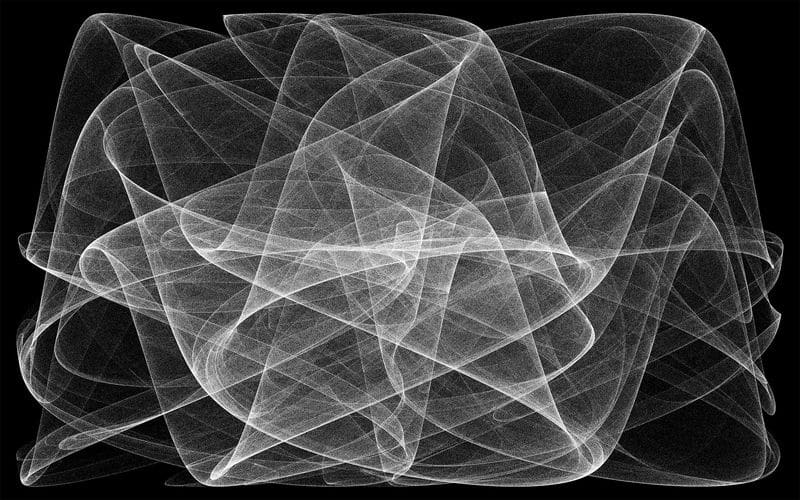[dropcap]W[/dropcap]ho would decide to do their artistic work as, or shall we say, who would take on a nom de plume of Akira Rabelais (AR)? A name derived from arguably the best-known manga and anime character of all-time and the last name of a classic French writer usually connected to the essence of the meaning of the words satire and grotesque?
Well, maybe a guy from Texas with a number of highly regarded university degrees, who’s produced a number of classic/electronic albums, a few movie soundtracks, invented a music production software used by many electronic musicians today, maintains a highly informative personal site that includes the whole of I Ching and Jorge Luis Borges’ Circular Ruins (among other things), and seemingly also works as a highly sought after operations manager for numerous projects under a name that could be his own. Maybe. Maybe not. But taking this and many other certain and possibly doubtful facts into consideration, Akira’s fantasy, post-apocalyptic world, and the satire and grotesqueness of Rabelais’ classic work Gargantua and Pantagruel, joined into one, starts to make sense. But then…
Path One: Fact and Fiction Makes Some Great Music
AR’s musical works started cropping up before the turn of the century with the geometrically titled Elongated Pentagonal Pyramid (Ritornell, 1999). In a way, it was a showcase for his aptly named “Lyre” musical software, later to be used by a number of  electronic musicians such as Scanner and Terre Thaelmitz. It was only a beginning and Eisotrophobia, the work that followed in 2001, truly spoke about the music AR was making and the direction he was going in.
electronic musicians such as Scanner and Terre Thaelmitz. It was only a beginning and Eisotrophobia, the work that followed in 2001, truly spoke about the music AR was making and the direction he was going in.
…played and processed through AR’s “Argeiphontes Lyre” software, the music gives off this dual feeling of both spookiness and comfort; similar to the feelings evoked when you walk through the Erik Satie Museum (Maisons Satie)…
It all starts with the album title itself, Eisotrophobia — which is a fear of seeing yourself in the mirror. Featuring works by Bela Bartok, Erik Satie, and a ‘certain’ Vincent Carté, played and processed through AR’s “Argeiphontes Lyre” software, the music gives off this dual feeling of both spookiness and comfort; similar to the feelings evoked when you walk through the Erik Satie Museum (Maisons Satie) in Honfleur, France (Satie’s hometown). While walking through the museum with headphones on listening to the presentation exhibits you constantly hear the grand, white player-piano located at the entrance/exit of the exhibition that continuously plays Satie’s music, without giving you a chance to distinguish whether its sound is getting closer or further away. AR was able to vividly paint a similar musical picture.

Spellewauerynsherde, the album AR recorded for David Sylvian’s Samadhisound label in 2004 is considered to be his best work yet. This time around AR processed Icelandic a cappella lament songs, turning them into ghostly sirens sending seductive calls to listeners without really telling them what is at stake and whether they are calling from the future or from the past. It can simultaneously be considered as one of the spookiest and comforting albums around.
A number of other works followed, ranging from pure electronic noise (“Seduced By The Silence” from Caduceus), to the ’spookiness’ of the Argeiphontes Lyre (“Pourtant, sous la tutelle invisible d’un Ange”, from Benediction, Draw), to modern classical piano (Little Glass), which was completed alongside composer Harold Budd.
Path Two: Fiction or Facts, Intermingled
What is fact or fiction in the Akira Rabelais story is hard to determine, and the man behind it all obviously wants it to stay that way. Just taking a glance at his website gives you the impression that you have really found yourself in the Garden Of Forking Paths; a story from Jorge Luis Borges’ collection Circular Ruins, that can be read in its entirety on the site along with other examples of a well-read person with a particular taste. In the tradition of the name, the introductory notes on the site are in French and Japanese, with a subtitle question in Spanish.
Just taking a glance at his website gives you the impression that you have really found yourself in the Garden Of Forking Paths…
The music is all there. Or is it? At the site, there is no mention of any film soundtrack work. There is though on IMDb. Akira Rable is cited there as the author of three movie soundtracks – Drawing Restraint 9 (2005), Silence (2012) and SMS Sugar Man (2008). His work ranges from composing and performing to piano treatments.

Then there is the question of Vincent Carté, the composer, listed along Satie and Bartok on the Eisotrophobia album. In the Columbia University’s scientific study Music and Computers: A Theoretical and Historical Approach, “Argeiphontes Lyre” is specifically listed as one of the novel approaches in electronic music, giving an example of “Aposiopesi,” written by Vincent Carté and recorded by Akira Rabelais. Searching for Vincent Carté, the composer, however, will not get you anywhere. But looking for Vincent Carté will lead you to a renowned and sought after project manager who holds a BA from Bennington College and MFA from California Institute of Arts, who is also listed as… somebody who worked on “Argeiphontes Lyre.”
Path Three: Remains In the Mist
Whether Akira Rabelais is Vincent Carté, is hard to confirm. After all, Akira, the manga character, serves as a driving force in the lives of many characters in his universe, and Akira the composer/musician never spoke about his real name. He did point out that he is from South Texas, that he is a “composer writing software, not an engineer making music,” and that “one of his childhood pastimes involved shooting metal plates with BB guns so that he could experience the unique sound that it caused.”
Is that Francois Rabelais taking over with his tongue firmly in cheek? Maybe. Maybe not. Probably. But in the end, does it really matter?




